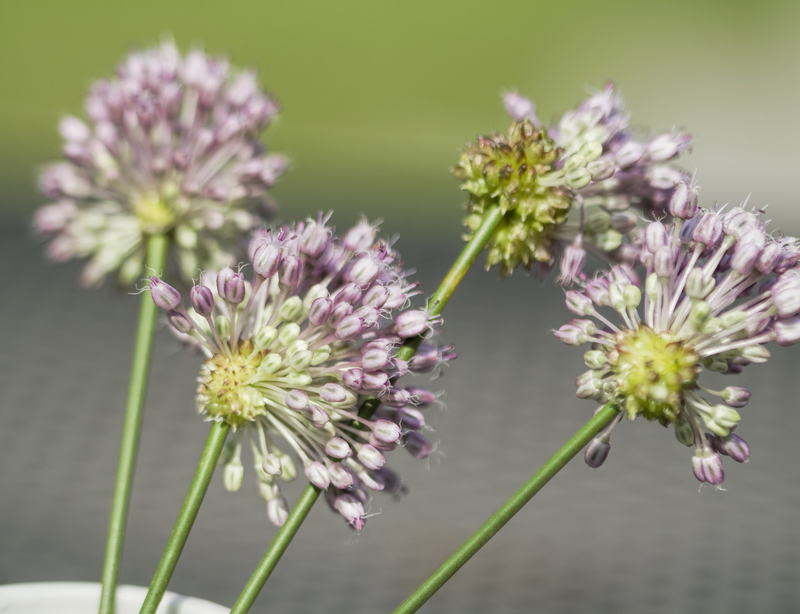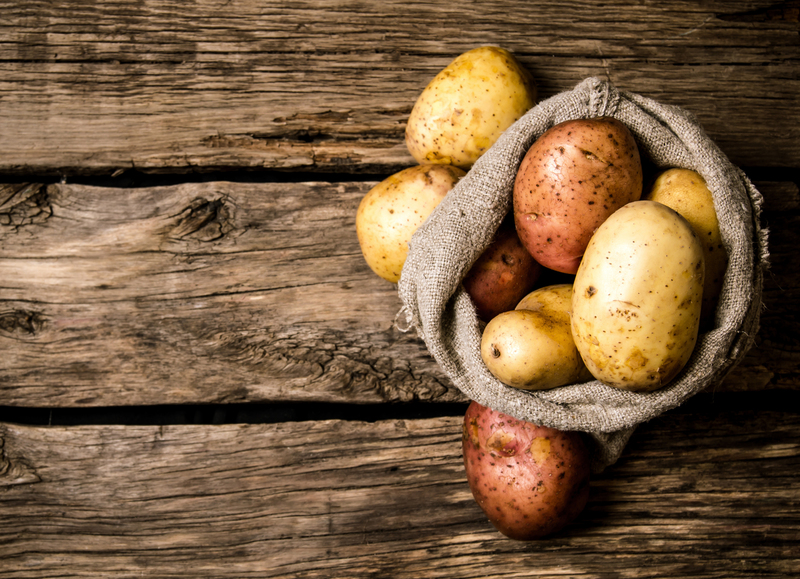Ensuring a Lush and Secure Green Space for Your Pup
Posted on 21/09/2025
Ensuring a Lush and Secure Green Space for Your Pup
Every pet owner dreams of providing their dog with a beautiful, safe, and thriving green space where they can play, relax, and exercise without worry. Creating and maintaining a lush and secure yard for your pup not only enhances their wellbeing but also adds significant value to your home. In this comprehensive article, we'll explore the best strategies for ensuring a vibrant, tough, and pet-safe lawn, discuss practical landscaping techniques, recommend the best grass types, and introduce effective fencing solutions for pet security.
Why a Healthy Green Space Matters for Your Dog
A luxurious, safe yard is more than just aesthetics--it's an essential part of your dog's daily life. A dedicated green area supports your pup's physical and emotional health, providing space for:
- Exercise--vital for maintaining healthy weight and muscles
- Mental stimulation, reducing boredom and destructive behaviors
- Safe exploration--letting your pup enjoy nature without risk
- Socialization if you have more than one dog, or regularly host canine visitors
Moreover, a well-cared-for yard reduces the risks of injury, toxic exposure, and escape attempts. Investing in your dog's outdoor space is investing in their happiness.

How Dogs Impact Your Green Space
Understanding Canine Behavior in the Yard
Before you begin transforming your garden for your pup, it's important to understand how dogs interact with green spaces. Common canine habits can take a toll on lawns:
- Digging: Many breeds love to dig, which can uproot grass and damage roots.
- Urinating: Dog urine is highly concentrated with nitrogen, leading to yellow or brown spots in your lawn.
- Chewing: Puppies and some adults may chew plants or grass, risking ingestion of toxic species.
- Running paths: Active dogs create 'dog runs' or packed-down tracks along fences and perimeter lines.
Recognizing these behaviors is the first step in crafting a durable lawn that can withstand your dog's playtime while remaining verdant and inviting.
The Science of Dog-Friendly Lawns
Dog-friendly lawns require more than just regular mowing. The combination of heavy foot traffic, digging, compounds in dog waste, and plant chewing challenges standard landscaping approaches. You'll need to consider:
- The right grass varieties
- Resilient landscaping features
- Safe plant selections
- Protective fencing and barriers
- Pet-safe lawn care products
Choosing the Best Grass for a Dog-Proof Lawn
Not all grass types are created equal when it comes to creating a lush and secure green space for your dog. Some varieties are more tolerant of trampling, digging, and urine damage. Here are top recommendations:
- Bermuda Grass: Known for its dense, tough blades and high wear resistance, Bermuda is ideal for active dogs, especially in warmer climates.
- Perennial Ryegrass: With rapid germination and excellent recovery from damage, Ryegrass is great for high-traffic areas.
- Kentucky Bluegrass: This cool-season grass is self-repairing and lush, making it a favorite for canine play areas in northern regions.
- Zoysia Grass: Drought tolerant and extremely durable, Zoysia forms a dense mat that resists digging and running.
- Fescue: Varieties like Tall Fescue are resilient and cope well with both shade and partial sunlight.
Avoid delicate grasses such as St. Augustine or fine fescues for main play regions, as these can quickly become sparse with heavy use from dogs.
Landscaping Techniques for a Lush and Safe Yard
Designing with Dogs in Mind
The layout and materials you choose can greatly enhance both the safety and resilience of your yard.
-
Designated Play Zones:
Create areas specifically for running, such as a wide grassy stretch, and designated potty spots lined with easy-clean materials like pea gravel or mulch. -
Durable Pathways:
To accommodate your dog's running patterns and reduce bare tracks, install stone or gravel paths along your yard's borders. -
Shaded Retreats:
Dogs need shelter from the sun. Incorporate trees, sturdy shrubs (pet-safe!), or use shade sails to prevent overheating during playtime. -
Secure Fencing:
Install strong fencing at least 4-6 feet high to contain even the most athletic pups. Ensure there are no gaps for escape and smooth out sharp edges for safety.
Pet-Safe Plants and Greenery
Many common garden plants are toxic to dogs. For a secure garden for your pup, opt for plants such as:
- Sunflowers, Marigolds, Cornflowers, and Snapdragons for color and safety.
- Herbs such as basil, cilantro, and rosemary (avoid chives and onions).
- Non-toxic ornamental grasses for texture and interest.
Common garden hazards to avoid include sago palm, azalea, oleander, foxglove, lilies, and daffodils. Always check before introducing a new plant to your garden.
Effective Lawn Maintenance for Pet-Friendly Yards
Regular Upkeep
To ensure a lush green space for your dog, consistent care is crucial. Prioritize the following maintenance activities:
- Mowing: Keep grass at 2-3 inches tall for durability and easy clean-up.
- Irrigation: Water deeply to promote strong roots, especially if urine burn is an issue.
- Reseeding: High-use areas may need to be reseeded annually with tough, fast-growing grass.
- Fertilization: Use only pet-safe, organic fertilizers and keep dogs off treated areas as instructed.
- Raking and Debris Removal: Regularly remove fallen branches, seed pods, or leaves that could harbor pests or present choking hazards.
Dealing with Dog Urine Spots
Dog urine can cause unsightly yellow patches on an otherwise green lawn. Combat this common problem with these techniques:
- Quick Dilution: Hose down areas where your pup urinates to minimize nitrogen buildup.
- Encourage Hydration: Well-hydrated dogs produce more dilute urine, reducing burn risk.
- Designated Toilet Area: Train your dog to use a specific spot, lined with gravel or mulch, saving the main yard from concentrated damage.
- Reseed Regularly: Use urine-resistant grasses for patch repairs.
Pest and Weed Control--Pet-Safe Methods
Avoid products containing harmful herbicides, pesticides, or fertilizers. Instead, employ:
- Manual Weeding for small areas and spot control.
- Corn gluten meal as an eco-friendly pre-emergent weed blocker.
- Beneficial nematodes for natural grub and flea prevention.
- Mulching with cedar or pine bark in flowerbeds to deter weeds and retain moisture (ensure mulch is pet-safe and non-toxic).
Maximizing Safety: Dog-Proofing Your Green Space
Smart Fencing Solutions
- Choose the Right Material: Solid wooden fences prevent distractions, while chain link is durable but may be climbable.
- Install Dig-Proof Barriers: Bury chicken wire or install hardscape edging along fences to deter tunneling.
- Use Self-Closing Gates: Ensure all access points are secure to prevent accidental escapes.
- Consider Double Gates: Especially useful if you have a dog who bolts, creating a safety buffer zone.
Avoiding Outdoor Hazards
- Lock Away Chemicals: Store any lawn care products, antifreeze, or pool chemicals well out of reach.
- Check for Sharp Objects: Regularly inspect for loose nails, splinters, or broken tools.
- Secure Trash Receptacles: Use latched lids to prevent scavenging.
- Cover Ponds and Pools: Ensure water features are dog-safe, with fences or covers where necessary.
Tip: Rotate Toys and Features
To keep your pup engaged and discourage digging or fence running, change toys and add new features like sand pits, agility equipment, or sprinklers for summer fun.
Addressing Common Yard Issues for Dog Owners
Managing Digging Dogs
Digging is a natural canine behavior that can be minimized with a few strategies:
- Provide a Digging Pit: Designate a sand or dirt area for approved digging and reward use.
- Address Boredom: Ensure regular walks, toys, and playtime to reduce destructive digging.
- Reinforce Boundaries: Block off newly seeded regions or flower beds with temporary mesh fencing or shrubs.
Noise and Traffic Issues
Some dogs bark excessively at passersby or vehicles. Solid fencing, dense shrubbery along the fence line, and strategic landscaping can help block stimuli, reducing barking and stress.
Allergies and Sensitive Paws
Choose grass varieties with soft blades and avoid chemical treatments. Consider artificial turf as an alternative in problem areas, but ensure it's high quality, well-draining, and heat-resistant.
Pro Tip: Rinse your dog's paws after play to remove allergens or possible lawn residues.

Sustainable Practices for a Lush Dog-Friendly Yard
- Compost Pet Waste: Only use specially designed pet waste composters--never add dog waste to your vegetable garden compost.
- Harvest Rainwater: Use rain barrels to conserve water and irrigate your lawn in dry seasons.
- Native Plant Landscapes: Integrate native grasses and plants for lower maintenance, increased biodiversity, and natural resilience.
- Reduce Hardscape: The more permeable green surface, the less run-off and heat-retention in your yard.
Conclusion: The Joys of a Lush and Secure Dog-Friendly Green Space
Providing a lush and secure green space for your pup is an investment in their health, happiness, and safety--and a benefit to your whole family. With careful plant selection, durable lawn choices, smart design, and ongoing, pet-safe care, you can create an outdoor haven that invites play and relaxation. Gardens that thrive--despite digging, running, and the occasional muddy paws--are possible with a little planning and commitment.
Picture your dog lounging in cool grass, chasing butterflies, and exploring to their heart's content--knowing you've crafted a green retreat that's as beautiful as it is safe.
Start your journey today and enjoy the rewards of a vibrant, dog-proof, and worry-free lawn for years to come!

